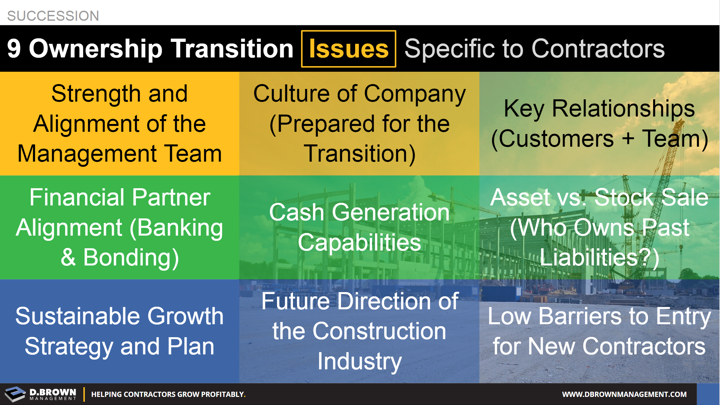There are nine interrelated issues that heavily impact contractors.
We will dive deeper into each of these over the next week:
- Strength and alignment of the management team (post-deal)
- Culture of the company - Is it prepared for an ownership succession and compatible with the new owner? Seems “soft” but is very “hard” and can destroy value quickly.
- Key relationship continuity with employees, customers, and others.
- Financial partner alignment with banking, surety, and possibly insurance.
- Asset vs. stock sale - who owns past liabilities, how are they quantified, and what is the tax implication?
- Future direction of the construction industry and ensuring you are neither selling nor buying the equivalent of a horseshoe manufacturer and installer in 1900.
- Extremely low barriers to entry for new contractors can easily create competitors out of unaligned stakeholder groups, which often destroys value.

